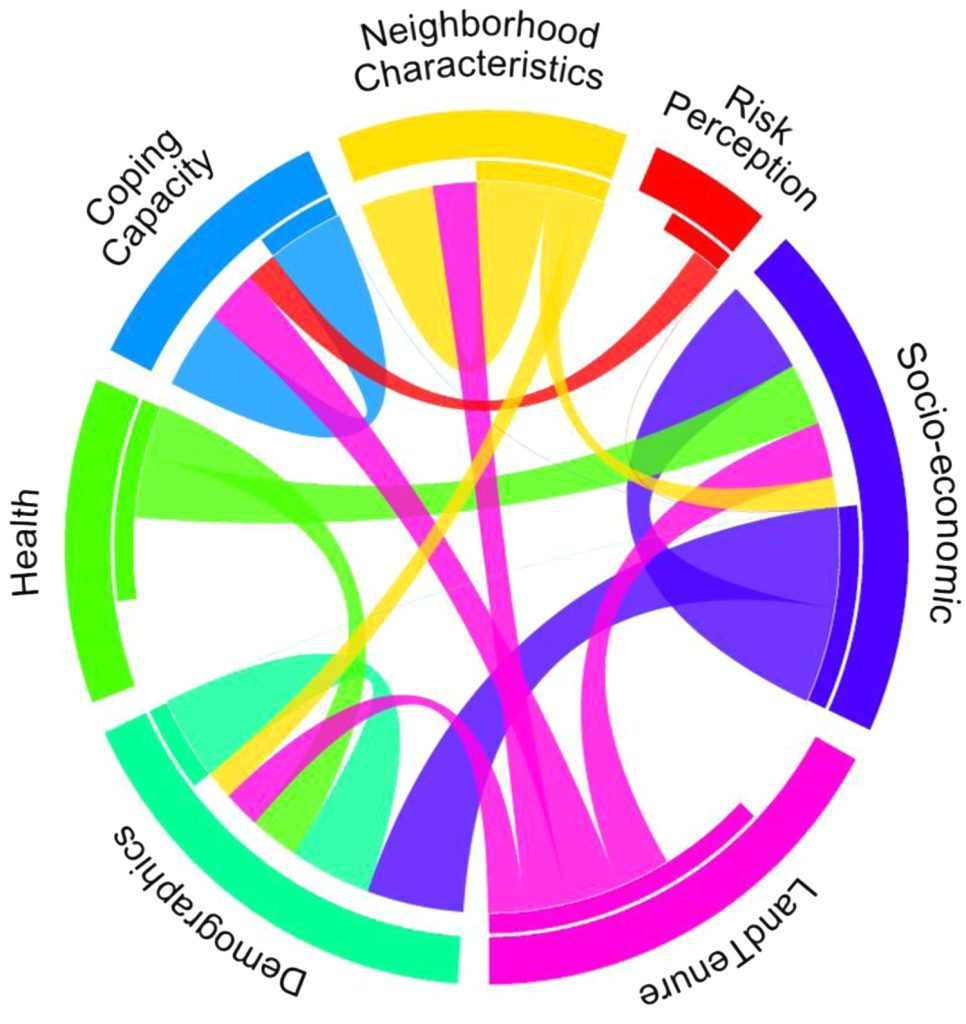
This section is based on the research of S. Rufat, E. Burton, C. G. Burton & A. S. Maroof (2015), who analyzed 67 case studies of flood disasters to identify the most recurring drivers of social Vulnerability.
Vulnerability can be defined as “the propensity or predisposition to be adversely affected” by an event and “encompasses a variety of concepts and elements including sensitivity or susceptibility to harm and lack of capacity to cope and adapt”. (IPCC, 2022) In this section of the web documentary, you will be able to understand what are the main drivers of social Vulnerability to floods at the individuals’ scale. According to an article published by R. Rufat & al. in 2015 which analyzes case studies of flood disasters and the recurring factors of social Vulnerability, socio-economic status and demographics are among the main ones. Therefore, other cross-cutting indicators (such as gender, income, age, ethnicity), might determine to some degree a population capacity to prepare, respond and show Resilience to a flood Disaster.
$
However, other population characteristics can be integrated in social Vulnerability such as Risk perception, coping capacity, health, neighborhood characteristics or land tenure. All previously mentioned social Vulnerability drivers can also interact with each other. It can play on the degree of their impact. Here the different identified main Vulnerability factors are presented in the order of their importance based on their recurrence both in the literature studied by Rufat & al. in their paper and in our case studies. However, all subsections of Vulnerability drivers do not follow any significance order.
Disclaimer: while reading this section, it is important to keep in mind that a defined driver of social Vulnerability can, in another context, be a vector of Resilience. Hence, social Vulnerability characteristics identified here are not intended to be perceived as universal but as most spread social Vulnerability drivers to floods. Also, identified drivers of social vulnerabilities have been linked to the case studies mostly based on the comparison between these same case studies. Therefore, it is not because a case studied is not linked to a specific type of Vulnerability in this web-documentary that this same Vulnerability does apply at all in the territory but just to a lesser extent than the national average or the other cases studied.

Bibliography
IPCC. 2022. Glossary. Annex II: Glossary [Möller, V., R. van Diemen, J.B.R. Matthews, C. Méndez, S. Semenov, J.S. Fuglestvedt, A. Reisinger (eds.)]. In: Climate change 2022: Impacts, Adaptation and Vulnerability. Contribution of Working Group II to the Sixth Assessment Report of the Intergovernmental Panel on Climate change [H.-O. Pörtner, D.C. Roberts, M. Tignor, E.S. Poloczanska, K. Mintenbeck, A. Alegría, M. Craig, S. Langsdorf, S. Löschke, V. Möller, A. Okem, B. Rama (eds.)]. Cambridge University Press, Cambridge, UK and New York, NY, USA, pp. 2897–2930, doi:10.1017/9781009325844.029. https://www.ipcc.ch/report/ar6/wg2/chapter/annex-ii/
